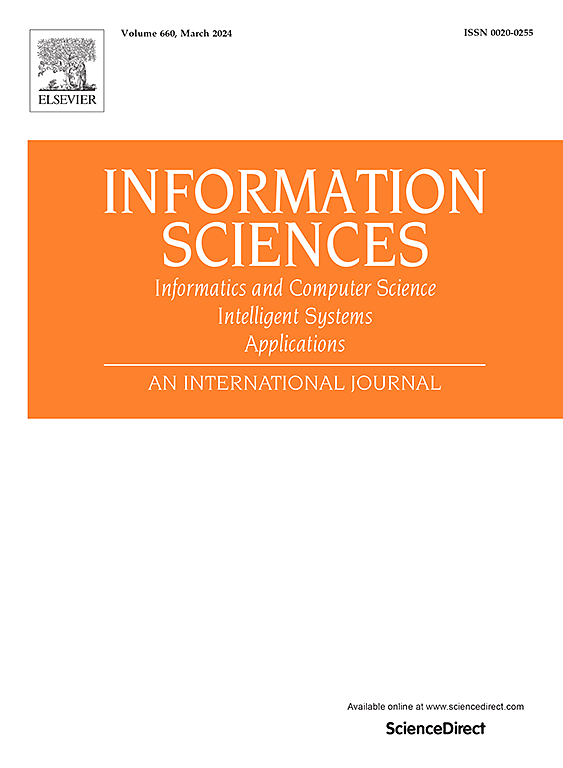Multi-granularity awareness via cross fusion for few-shot learning
IF 6.8
1区 计算机科学
0 COMPUTER SCIENCE, INFORMATION SYSTEMS
引用次数: 0
Abstract
Many existing few-shot learning methods based on a single-granularity structure have achieved promising results, but they insufficiently exploit the latent information within granularity structures. In addition, these methods still struggle with unclear class distinctions and scattered intra-class feature spaces, posing significant challenges for few-shot learning. To address these issues, we propose a multi-granularity awareness-guided cross-fusion (MACF) method for few-shot image classification. MACF enhances inter-class separation while promoting intra-class cohesion. Specifically, we introduce multi-granularity awareness to construct both coarse- and fine-grained representations, strengthening class affiliations and improving feature discriminability across classes. Moreover, we utilize local descriptors as features to develop a cross-fusion strategy that generates distinguishable pseudo-features, enriching intra-class feature diversity and mitigating the impaired generalization ability for unseen classes. Furthermore, we establish a reliability assessment metric for synthetic features to ensure the generation of representative features while reducing the impact of outlier perturbations. Extensive experiments on six few-shot benchmark datasets demonstrate the effectiveness of the proposed MACF method. The basic data and code can be accessed via the link: https://github.com/woodszp/MACF.
通过交叉融合实现多粒度感知,实现少镜头学习
现有的基于单粒度结构的小样本学习方法虽然取得了不错的效果,但未能充分挖掘粒度结构内部的潜在信息。此外,这些方法仍然存在类区分不清和类内特征空间分散的问题,这对少拍学习提出了重大挑战。为了解决这些问题,我们提出了一种多粒度感知引导的交叉融合(MACF)方法用于少镜头图像分类。MACF增强了阶级间的分离,同时促进了阶级内部的凝聚力。具体来说,我们引入了多粒度感知来构建粗粒度和细粒度表示,加强类关联并提高跨类的特征可辨别性。此外,我们利用局部描述符作为特征来开发交叉融合策略,生成可区分的伪特征,丰富类内特征多样性,减轻对未见类的泛化能力受损。此外,我们建立了一个可靠性评估指标,以确保生成具有代表性的特征,同时减少离群扰动的影响。在六个少量基准数据集上的大量实验证明了该方法的有效性。基本数据和代码可以通过链接:https://github.com/woodszp/MACF访问。
本文章由计算机程序翻译,如有差异,请以英文原文为准。
求助全文
约1分钟内获得全文
求助全文
来源期刊

Information Sciences
工程技术-计算机:信息系统
CiteScore
14.00
自引率
17.30%
发文量
1322
审稿时长
10.4 months
期刊介绍:
Informatics and Computer Science Intelligent Systems Applications is an esteemed international journal that focuses on publishing original and creative research findings in the field of information sciences. We also feature a limited number of timely tutorial and surveying contributions.
Our journal aims to cater to a diverse audience, including researchers, developers, managers, strategic planners, graduate students, and anyone interested in staying up-to-date with cutting-edge research in information science, knowledge engineering, and intelligent systems. While readers are expected to share a common interest in information science, they come from varying backgrounds such as engineering, mathematics, statistics, physics, computer science, cell biology, molecular biology, management science, cognitive science, neurobiology, behavioral sciences, and biochemistry.
 求助内容:
求助内容: 应助结果提醒方式:
应助结果提醒方式:


